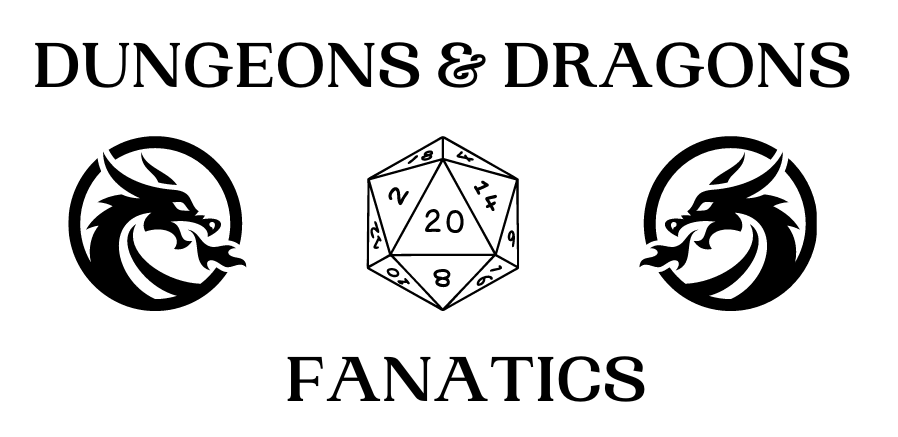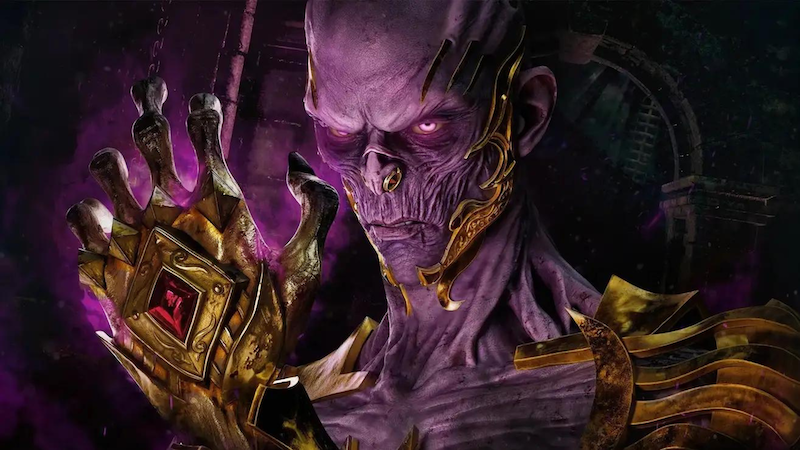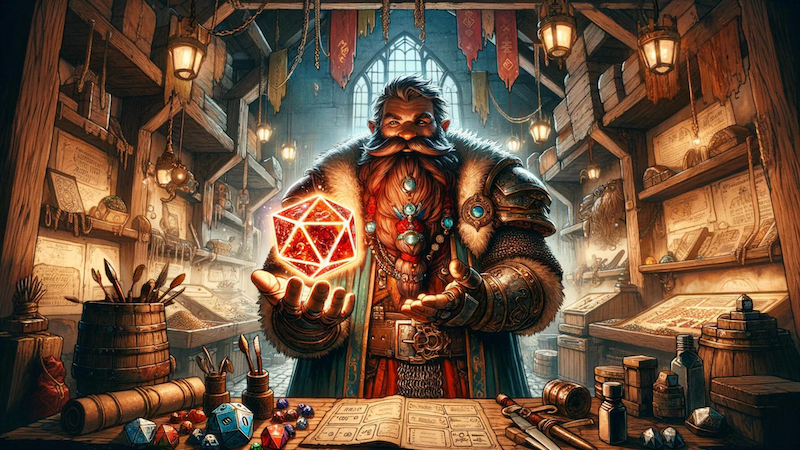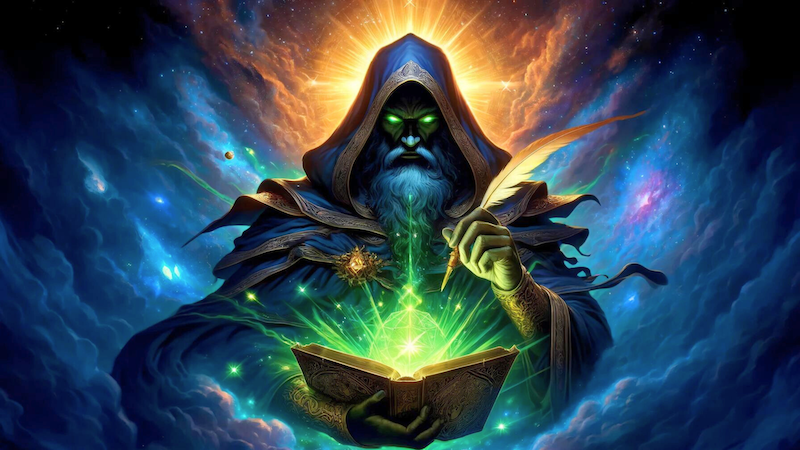

The Bard: DnD 5e Class Guide (Updated May 2024)
As an Amazon Associate I earn from qualifying purchases.
Amid the clash of steel and the shouts of battle, Valeran strummed a chord on his lute, the rich, golden sound vibrating through the air with a life of its own. As the melody surged, the soldiers from the garrison fought with renewed vigor against the rushing tide of orcish warriors. Valeran drew his rapier with a flourish, a mischievous glint in the half-elf’s eye as he leapt into the fray and began to recite another spell.
Table of Contents
- What is a Bard in DnD 5e?
- What is a Bard’s primary ability score?
- What is a Bard’s hit die and hit points?
- What are Bards proficient in?
- What equipment do Bards start with?
- What unique features do Bards have?
- How does Bard spellcasting work?
- What are the Bard subclasses?
- What species are best for Bards?
- How do you roleplay a Bard?
- What DnD 5e sourcebooks do Bards appear in?


What is a Bard in DnD 5e?
The Bard remains one of the most iconic DnD 5e classes and are known for their ability to weave song, speech and sorcery to inspire allies, demoralize enemies and win over almost any crowd. Bards themselves are as diverse as the lands they wander in, ranging from adventuring scoundrels to scholarly masters of their art.
Notably, in DnD 5e, Bards have a reputation for being somewhat difficult to roleplay, with many players having a stereotypical view of them as being overly lustful or purposefully causing problems for the party. In reality, they are actually a surprisingly deep class with flexibility in terms of their character builds and roleplaying potential. Bards also stand out for their magical powers as they are “full casters,” meaning they have the ability to tap into spells at the same progression level as Clerics, Druids, Sorcerers and Wizards.
Below is the Bard class table, which breaks out their proficiency bonuses, features and spell progression for each level.
| The Bard | Spell Slots per Spell Level | ||||||||||||
|---|---|---|---|---|---|---|---|---|---|---|---|---|---|
| Level | Proficiency Bonus | Features | Cantrips Known | Spells Known | 1st | 2nd | 3rd | 4th | 5th | 6th | 7th | 8th | 9th |
| 1st | +2 | Spellcasting, Bardic Inspiration (d6) | 2 | 4 | 2 | – | – | – | – | – | – | – | – |
| 2nd | +2 | Jack of All Trades, Song of Rest (d6), Magical Inspiration (Optional) | 2 | 5 | 3 | – | – | – | – | – | – | – | – |
| 3rd | +2 | Bard College, Expertise | 2 | 6 | 4 | 2 | – | – | – | – | – | – | – |
| 4th | +2 | Ability Score Improvement, Bardic Versatility (Optional) | 3 | 7 | 4 | 3 | – | – | – | – | – | – | – |
| 5th | +3 | Bardic Inspiration (d8), Font of Inspiration | 3 | 8 | 4 | 3 | 2 | – | – | – | – | – | – |
| 6th | +3 | Countercharm, Bard College feature | 3 | 9 | 4 | 3 | 3 | – | – | – | – | – | – |
| 7th | +3 | 3 | 10 | 4 | 3 | 3 | 1 | – | – | – | – | – | |
| 8th | +3 | Ability Score Improvement, Bardic Versatility (Optional) | 3 | 11 | 4 | 3 | 3 | 2 | – | – | – | – | – |
| 9th | +4 | Song of Rest (d8) | 3 | 12 | 4 | 3 | 3 | 3 | 1 | – | – | – | – |
| 10th | +4 | Bardic Inspiration (d10), Expertise, Magical Secrets | 4 | 14 | 4 | 3 | 3 | 3 | 2 | – | – | – | – |
| 11th | +4 | 4 | 15 | 4 | 3 | 3 | 3 | 2 | 1 | – | – | – | |
| 12th | +4 | Ability Score Improvement, Bardic Versatility (Optional) | 4 | 15 | 4 | 3 | 3 | 3 | 2 | 1 | – | – | – |
| 13th | +5 | Song of Rest (d10) | 4 | 16 | 4 | 3 | 3 | 3 | 2 | 1 | 1 | – | – |
| 14th | +5 | Magical Secrets, Bard College feature | 4 | 18 | 4 | 3 | 3 | 3 | 2 | 1 | 1 | – | – |
| 15th | +5 | Bardic Inspiration (d12) | 4 | 19 | 4 | 3 | 3 | 3 | 2 | 1 | 1 | 1 | – |
| 16th | +5 | Ability Score Improvement, Bardic Versatility (Optional) | 4 | 19 | 4 | 3 | 3 | 3 | 2 | 1 | 1 | 1 | – |
| 17th | +6 | Song of Rest (d12) | 4 | 20 | 4 | 3 | 3 | 3 | 2 | 1 | 1 | 1 | 1 |
| 18th | +6 | Magical Secrets | 4 | 22 | 4 | 3 | 3 | 3 | 3 | 1 | 1 | 1 | 1 |
| 19th | +6 | Ability Score Improvement, Bardic Versatility (Optional) | 4 | 22 | 4 | 3 | 3 | 3 | 3 | 2 | 1 | 1 | 1 |
| 20th | +6 | Superior Inspiration | 4 | 22 | 4 | 3 | 3 | 3 | 3 | 2 | 2 | 1 | 1 |


What is a Bard’s Primary Ability Score?
Charisma is an Bard’s primary ability score. Your character must have a Charisma of 13 or higher to play a Bard or to multiclass as one. This reflects a Bard’s focus on performance and how they use a combination of song and speech to cast their magic.
The higher your Charisma score, the more adept you are at performance and spellcasting. This is particularly important at higher levels as it directly influences spell attacks and saving throws, as well as certain special abilities.
Notably, Bard’s also gain a saving throw proficiency in Dexterity, which reflects their nimbleness, cunning and ability to avoid danger.


What is a Bard’s Hit Die and Hit Points?
Bards have 1D8 hit dice per level. This mean at 1st Level your Bard’s hit points will be 8 + your Constitution modifier. Each level you advance you from Level 2 onwards, you gain an additional 1D8 (or an average of 5) Hit Points, plus your Constitution modifier.
This makes Bards more robust than other magic users (such as Clerics and Druids, who have a D6 Hit Dice) but less resilient than DnD 5e Fighters (who have a D10 Hit Dice). If you’re interested in creating a Bard that is more adept at melee combat, you may want to consider going for a higher Constitution score to provide additional hitpoints.


What are Bards Proficient In?
Bards have a unique set of proficiencies that reflect their unique skills in music, magic and melee combat.
- Armor: Light armor
- Weapons: Simple weapons, hand crossbows, longswords, rapiers and shortswords
- Tools: Three musical instruments of your choice
- Saving Throws: Dexterity and Charisma
- Skills: Choose any three


What Equipment Do Bards Start With?
As a Level 1 Bard, you begin your adventures with the following equipment, in addition to any equipment that’s provided by your background:
- A rapier, longsword or any simple weapon
- A diplomat’s pack or an entertainer’s pack
- A lute or any other musical instrument
- Leather armor and a dagger


What Unique Features Do Bards Have?
As a Bard, you’re able to access a number of unique Features that reflect your nature as both a performer and spellcaster. This includes.
- Bardic Inspiration: As a bonus action, choose one creature within 60 feet of you who can hear you. That creature gains one Bardic Inspiration dice (a D6 at lower levels and a D8 at higher levels). The creature can roll this dice anytime in the next 10 minutes, adding the result to one ability check, attack roll or saving throw. The creature can wait until after it rolls the d20 before deciding to use the Bardic Inspiration die, but must decide before the DM says whether the roll succeeds or fails. Once the Bardic Inspiration die is rolled, it is lost, and a creature can also have only one Bardic Inspiration die at a time.
- Jack of All Trades: Starting at 2nd level, you can add half your proficiency bonus (rounded down) to any ability check you make that doesn’t already include your proficiency bonus.
- Song of Rest: Beginning at 2nd level, any friendly creatures (including yourself) who can hear your performance can gain an extra 1D6 hit points if they spend a Hit Dice. The extra Hit Points increase as your Bard increases in levels (1D8 at 9th level, 1D10 at 13th level, and 1D12 at 17th level).
- Expertise: At 3rd level, choose two of your skill proficiencies. Your proficiency bonus is doubled for any ability check you make that uses either of the chosen proficiencies. Notably, at 10th level, you can choose another two skill proficiencies to gain this benefit.
- Font of Inspiration: Starting at 5th level, you regain all of your Bardic Inspirations when you finish a short or long rest.
- Countercharm: At 6th level, you can start a performance that lasts until the end of your next turn. During that time, you and any friendly creatures within 30 feet of you have advantage on saving throws against being frightened or charmed. A creature must be able to hear you to gain this benefit.
- Magical Secrets: At 10th level choose two spells from any class (including the Bard class). A spell you choose must be of a level you can cast, as shown on the Bard table above (it can also be a cantrip). The chosen spells count as bard spells for you and are included in the number in the Spells Known column of the Bard table. You learn two additional spells from any classes at 14th level and again at 18th level.
- Superior Inspiration: At 20th level, when you roll initiative and have no uses of Bardic Inspiration left, you regain one use.


How does Bard Spellcasting Work?
As a Bard, you channel your magic through music, speech or performance, and you can use a musical instrument as your spellcasting focus. Not all Bards, however, are musical in nature, and some cast magic through storytelling, acting or other types of performance.
Charisma is a Bards’s primary spellcasting ability as follows:
- Spell save DC = 8 + your proficiency bonus + your Charisma modifier
- Spell attack modifier = your proficiency bonus + your Charisma modifier
Bards are officially full-casters (meaning their spell list progression moves at the same speed as Wizards, Sorcerers, Bards, Druids and Clerics). You are, however, limited and have access only to specific Bard Spells.


What are the Bard Subclasses?
Currently, there are 8 official Bard subclasses for DnD 5e that are referred to as “Colleges,” each of which represents one of the organizations that train Bards and retain specialized knowledge. You choose your College subclass at Level 3.
- College of Creation: You harness the magic of creation, channeling the raw chaos that formed the universe. This subclass allows you to animate inanimate objects, create performance-enhancing motes and summon items temporarily into existence.
- College of Eloquence: You are a master the art of persuasion, using your words to charm, inspire and manipulate others. This subclass grants you abilities that make your speech almost impossible to resist and reduce the effectiveness of enemies.
- College of Glamour: You weave a magic of enchantment and allure, captivating those around you. This subclass provides you with abilities to charm audiences, command attention and manipulate others’ emotions.
- College of Lore: You collect bits of knowledge from all manner of stories, songs and spells. This subclass enhances your versatility by granting additional proficiencies, magical secrets from other classes and the ability to use your knowledge to limit enemy attacks.
- College of Spirits: You channel the tales and powers of the spirits through your performances. This subclass gives you the ability to summon spirits to convey storied fables, granting you and your allies a variety of magical effects.
- College of Swords: You blend performance with martial prowess, using your weapon as both an instrument and a conduit for your bardic spells. This subclass focuses on enhancing your combat abilities, allowing for flourishes that deal extra damage and bolster your defenses.
- College of Valor: You inspire others in battle through your courage and prowess. This subclass bolsters your martial capabilities, providing an Extra attack and allowing you protect your allies and enhance group combat tactics.
- College of Whispers: You traffic in secrets and fear, using your performances to unsettle and manipulate. This subclass grants you the power to psychically harm your foes, steal identities and sow paranoia, turning your art into a weapon of psychological warfare.


What Species are Best for Bards?
While any species can be a Bard, in general ones that offer boosts to Charisma are typically seen as the best options. This includes:
- Half-Elf: Offers a +2 bonus to Charisma and +1 to two other ability scores of your choice. They also have access to skills like Darkvision and Fey Ancestry, which provides advantages against being charmed and immunity to sleep magic.
- Tiefling: Features a +2 bonus to Charisma, which is ideal for Bards. A Tiefling’s resistance to some forms of magic and their unique appearance, also lends itself well to the class and offers a unique take on the stereotypical view of humans bard.
- Changeling: Native to Eberron, Changelings receive a +2 Charisma bonus and another +1 to an ability score of their choice. Their unique ability to change their appearance at will also offers unique roleplaying and performance possibilities for Bards.
- Human: With a +1 bonus to all ability scores, humans make ideal bards and are often associated with the class.


How Do You Roleplay a Bard?
Roleplaying a Bard involves embracing the persona of an entertainer and magic user. While you should always consider your character’s background and goals, here are a few ideas to get you started:
- Wandering Minstrel: You travel the land with nothing but your instrument and a repertoire of songs that can bring kings to tears or inspire armies to victory. Your music tells stories of legendary heroes and forgotten truths, weaving magic that resonates with the hearts of your listeners.
- Courtly Diplomat: In the cutthroat world of political intrigue, your eloquence and charm are your greatest weapons. As a courtly diplomat, you navigate the dangerous waters of the nobility with ease, using your wit and intelligence to influence and manipulate.
- Streetwise Scoundrel: You live among bustling streets and shadowy alleyways. As a streetwise scoundrel, your performances are a mix of daring acrobatics, quick wit, and sleight of hand, earning you both admiration and infamy among the city’s underworld.
- Bardic Historian: Armed with a quill and a thirst for forgotten lore, you journey to ancient ruins and dusty libraries in search of lost knowledge. As a bardic historian, your performances are a celebration of history and legend, bringing to life the deeds of heroes long gone.
- Bardic Chronicler: With ink-stained fingers and a mind like a steel trap, you meticulously record the events of your travels and the stories of those you meet. As a bardic chronicler, your performances are a blend of storytelling and scholarly analysis, weaving together facts and anecdotes to create a comprehensive narrative of the world around you.
- Shadow Singer: You are a master of infiltration and subterfuge, moving unseen through the shadows and whispering secrets in the ears of kings and beggars alike. As a spy your performances are a carefully orchestrated dance of deception and espionage, using your charm and charisma to extract information and manipulate those around you.
- Warrior Poet: Clad in fur and wielding both sword and verse, you embody the spirit of the ancient skalds, who fought as fiercely with words as they did with weapons. As a warrior poet, your performances are a symphony of battle cries and epic ballads, inspiring your comrades to feats of heroism and striking fear into the hearts of your foes.


What DnD 5e sourcebooks do Bards appear in?
While Bards have been around since some of the earliest versions of Dungeons & Dragons, rules related to the class for DnD 5e can be found in the following sourcebooks:
- Player’s Handbook: Includes base class, plus the College of Lore and College of Valor.
- Xanathar’s Guide to Everything: College of Glamour, College of Swords and College of Whispers.
- Mythic Odysseys of Theros: College of Eloquence.
- Tasha’s Cauldron of Everything: College of Eloquence (reprinted) plus the College of Creation.
- Van Richten’s Guide to Ravenloft: College of Spirits.
More D&D News Coverage
For more from the world of Wizards of the Coast, visit our D&D News page.







